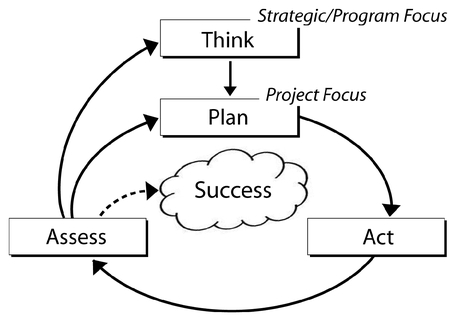9
Managing the Strategic Action Cycle
You have to be fast on your feet or else a strategy is useless.
—Lou Gerstner, IBM
Taking a “Cycle-Logical” Approach
In Chapter 1, I cited “one-shot planning” as one of the six dangerous planning mistakes. The chapter at hand offers thoughtful ways to overcome that mistake.
All living systems have the ability to learn from, and adapt to, their environment. Projects are living systems as well and the most useful project plans are “living documents” that evolve as unfolding internal or external circumstances force a shift in approach.
Keeping your plans timely and relevant is an excellent proxy measure of how well you are handling the project’s management process.
You do so by building feedback loops into your project plans and deliberately manage the strategic action cycle.
Taking an adaptive “cycle-logical” approach allows you to make intelligent responses to obstacles and opportunities that the project encounters after it starts and is under way.
This same philosophy is behind other management systems which include feedback loops (e.g., the Shewhart Cycle of Plan-Do-Check-Act).
Building any useful management model begins by considering the functions it needs to perform and then putting concepts together in a meaningful way. In our case, this model must integrate strategic/ program planning with project ...


